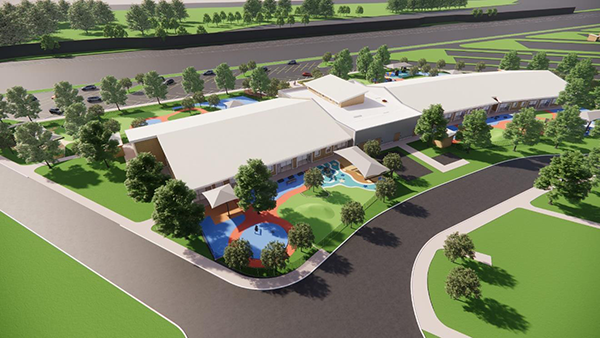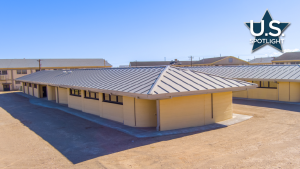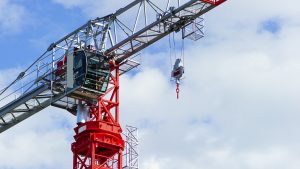The American military is looking at the possibility of using 3D printing, additive construction methods and cross-laminated timber (CLT) to build new military barracks and other buildings at various bases.
The U.S. Army Corps of Engineers (USACE) has already built new barracks at Fort Bliss, Texas, using 3D printing. The structures were the Department of Defense’s (DOD’s) first 3D-printed barracks.
The barracks were a collaboration between the army and Texas-based robotics and advanced materials startup ICON. Three buildings were built across two sites. Each building is 5,700 square feet. Two buildings are in the Pershing Heights area and one is at Camp McGregor in New Mexico.
The 3D-printed facilities initially will house troops deploying to Fort Bliss in support of the installation’s Mobilization Force Generation Installation which supports units as they prepare to deploy and after they return. Each of the barrack buildings can house up to 56 soldiers.
The barracks were designed using computer-aided design software. A 3D printer laid down concrete material that can be tailored to local environmental conditions, according to the Army.
The 3D-printed barracks program is part of the Army’s larger efforts to improve soldiers’ quality of life.  Â
At Marine Corps Air Station Cherry Point in North Carolina, the Naval Facilities Engineering Systems Command piloted the use of high-performance concrete (HPC) to build a new F-35 Lighting II hanger.
At Tyndall Air Force Base in Florida, where buildings were damaged by a hurricane in 2018, a computer aided design or digital 3D model was used to help rebuild structures.
Meanwhile, in Hampton Roads, Va., the Navy is now piloting the use of CLT to build a child development centre. CLT is also being used in another centre planned at Joint Expeditionary Base Little Creek-Fort Story, also in Virginia. As well, the Army is soliciting interest for a project at Mountain Home Air Force Base in Idaho that calls for a mass timber design.

Engineers at the Air Force Civil Engineer Center of the Air Force Installation and Mission Support Center are leading the way with research and development on the possibility of implementing concrete building construction techniques in future military construction projects.
Military officials met recently with lawmakers from the House appropriations committee, subcommittee on military construction, veterans affairs and related agencies, to discuss potential uses of innovative construction techniques and technologies by the armed forces.Â
Dave Morrow, director of military programs for the Army Corps of Engineers, and Keith Hamilton, chief engineer for Naval Facilities Engineering Systems Command (NAVFAC), met with lawmakers.
They discussed a number of topics, including additive construction, 3D-printed buildings, high performance cement and concrete mixes, geosynthetics, mass timber, composite materials, industrialized construction, tension fabric structures and carbon fiber-reinforced polymers.
The officials explained how the army and navy can develop the most cost efficient and resilient military construction projects using the techniques.
“In an increasingly complex global security environment, our commitment to innovation in military construction is not just about building structures, it’s about building the resilience and readiness our forces need to prevail,” said Morrow.
“By working with industry to leverage these advancements, we can deliver more durable, sustainable and cost-effective infrastructure for our military, ensuring taxpayer dollars are used efficiently, while equipping our troops with the best facilities in the world.”
Morrow said the various technologies can be used in garrison or in expeditionary environments.Â
“Additive construction has the potential to reduce costs, manpower, logistics and time, while opening the door for improved and new applications, such as unconventional countermeasures.”
The engineer research and development centre of the USACE has helped to develop unified facilities criteria to allow additive construction to be used in 80 per cent of the U.S. The criteria set basic technical requirements that must be followed to deliver code-compliant, complete and usable military facilities.Â
For the child development centre in Hampton Roads, Hamilton told the committee it will use a hybrid mass timber exterior envelope consisting of cross-laminated walls and diaphragms.Â

“DOD has expressly acknowledged the applicability of CLT with the creation of a guide specification. As the CLT construction industry matures, CLT may prove more competitive and could be utilized more broadly in DOD construction.”Â
As for HPC, Hamilton says there have been advancements that make it more durable, stronger and resistant to extreme environmental conditions as well as improved thermal and acoustic properties.
In submitted testimony to the committee, he wrote, “HPC has been used extensively for our piers, runways and other critical infrastructure, and we are broadening its application.”
Like the USACE, Hamilton said, NAVFAC is looking to newer technologies to provide better facilities and better capabilities to its fighters.
“NAVFAC is actively testing and employing innovative technologies, materials and methods for design and construction today, and we are leaning forward to increase collaboration with industry, academia and other government partners to identify and leverage future opportunities.”
He told lawmakers within the Navy new guidance requires NAVFAC planners and engineers to evaluate if new military construction projects can use alternative construction methods to meet warfighting requirements, lower costs and accelerate project delivery.










Recent Comments
comments for this post are closed